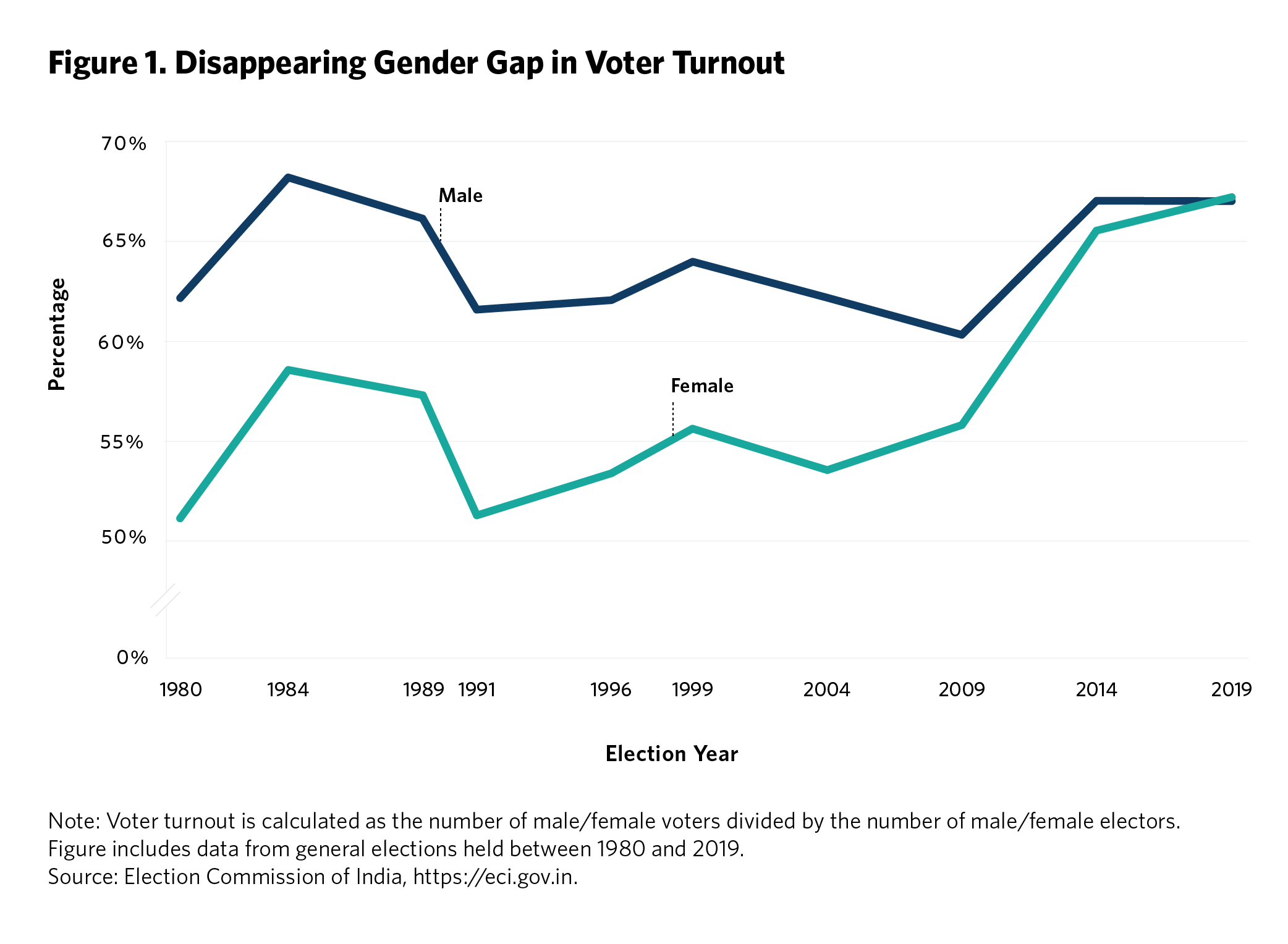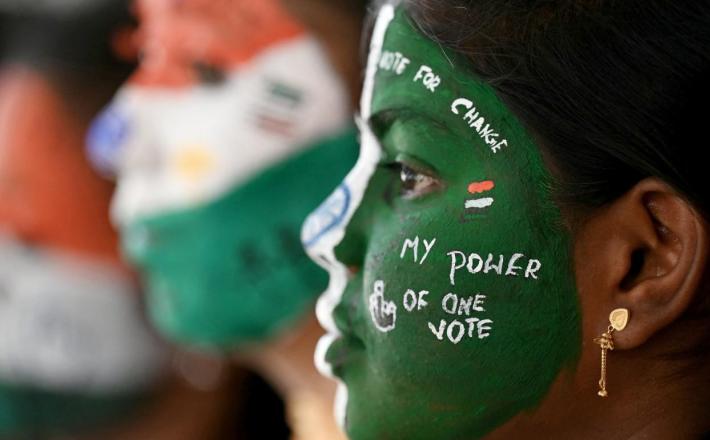What lies behind India’s rising female voter turnout
Source: Carnegie Endowment for International Peace
In India, as in many democracies around the world, there has long been a discernible gender gap in citizens’ political participation. For decades, Indian men were significantly more likely to cast their ballots on election day compared to women. It is noteworthy, therefore, that in the country’s 2019 general election, the historic gap between male and female turnout came to an end; for the first time on record, women voters turned out to vote at higher rates than men (see figure 1). Predictions for India’s upcoming 2024 general election suggest that this trend is likely to continue.

Although the gap between male and female voter turnout in India has been gradually shrinking in recent years, the convergence in electoral participation is nevertheless surprising for multiple reasons. First, as noted by Franziska Roscher, the increase in female turnout in India is occurring while female labor force participation—an important driver of women’s political participation—remains low compared to peer economies. Second, national-level data from the National Election Study (NES), conducted by the Lokniti Program of the Centre for the Study of Developing Societies, and other smaller studies confirm that women lag men across all measures of nonelectoral political engagement. For instance, data from two separate primary surveys—conducted in Rajasthan and Madhya Pradesh by political scientists Soledad Prillaman and Gabrielle Kruks-Wisner, respectively—demonstrate that while the gender gap in voter turnout has closed, gaps are all too visible in other forms of sustained political engagement, such as contacting elected representatives, attending public meetings, and participating in campaign activities. Third, women continue to be underrepresented in India’s national parliament and its state assemblies.
Read here the full article published by the Carnegie Endowment for International Peace on 5 April 2024.
Image source: Carnegie Endowment for International Peace

In India, as in many democracies around the world, there has long been a discernible gender gap in citizens’ political participation. For decades, Indian men were significantly more likely to cast their ballots on election day compared to women. It is noteworthy, therefore, that in the country’s 2019 general election, the historic gap between male and female turnout came to an end; for the first time on record, women voters turned out to vote at higher rates than men (see figure 1). Predictions for India’s upcoming 2024 general election suggest that this trend is likely to continue.

Although the gap between male and female voter turnout in India has been gradually shrinking in recent years, the convergence in electoral participation is nevertheless surprising for multiple reasons. First, as noted by Franziska Roscher, the increase in female turnout in India is occurring while female labor force participation—an important driver of women’s political participation—remains low compared to peer economies. Second, national-level data from the National Election Study (NES), conducted by the Lokniti Program of the Centre for the Study of Developing Societies, and other smaller studies confirm that women lag men across all measures of nonelectoral political engagement. For instance, data from two separate primary surveys—conducted in Rajasthan and Madhya Pradesh by political scientists Soledad Prillaman and Gabrielle Kruks-Wisner, respectively—demonstrate that while the gender gap in voter turnout has closed, gaps are all too visible in other forms of sustained political engagement, such as contacting elected representatives, attending public meetings, and participating in campaign activities. Third, women continue to be underrepresented in India’s national parliament and its state assemblies.
Read here the full article published by the Carnegie Endowment for International Peace on 5 April 2024.
Image source: Carnegie Endowment for International Peace